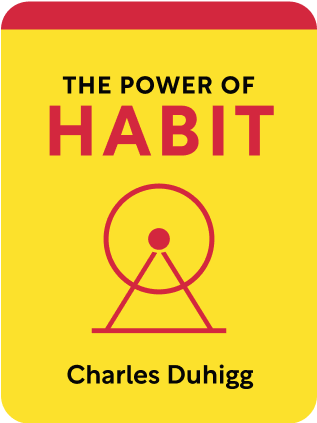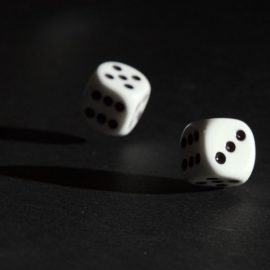

This article is an excerpt from the Shortform book guide to "The Power of Habit" by Charles Duhigg. Shortform has the world's best summaries and analyses of books you should be reading.
Like this article? Sign up for a free trial here .
What is the habit loop? How does the habit loop work and why is it so important?
The habit loop is the process by which we form and act on our habits. If you understand how the habit loop works, you can use it to form good habits and break bad ones.
Read more about the habit loop and how it
The Habit Loop
You think you’re making decisions all day, but more than 40% of the actions you take each day are actually habits.
Habits are choices that you continue doing repeatedly without actually thinking about them. At one point, they started with a decision, but they eventually became automatic.
They’re very powerful, and sometimes destructive. You can probably think about things you do everyday that you wish you did less of (binging Netflix shows; habitually opening Facebook; snacking when you’re not hungry).
But if you can understand how habits are triggered, you can overcome them. This summary will teach you the main strategies to recognize and overcome your habits.
Components of a Habit
A habit has 3 steps that form the habit loop:
- A cue, a trigger that tells your brain which habit to use and puts it into automatic mode.
- A routine, which acts out the habit. This can be physical, mental, or emotional.
- A reward, which is the result of the routine and reinforces the habit.
Experiments with rats in mazes show this in a simple form. Let’s say you place a rat in a maze, with a chocolate reward at the end of it. When you release the rat in the maze, you play a click sound. The first time, the rat explores randomly and eventually finds the chocolate. You repeat this multiple times, with the same click at the same time, and the chocolate in the same place.
Over time, the rat will build a habit and ace the maze, every single time. The click is the cue that activates the routine, or the specific route through the maze that gets to the chocolate reward.
You can even train the rat to activate different routines based on different cues. You can put the chocolate in a different place and associate it with a bang sound. Then, depending on whether you play a click or a bang, the rat will take the corresponding route.
Interestingly, when the rat’s running its routine, its brain goes into autopilot. The rat’s brain activity is a lot less active than it is when normally exploring the world. If you’ve ever zoned out while doing something pretty complex – like brushing your teeth or backing out of the driveway – you know the feeling.
This graph shows brain behavior in trained rats. Notice how the brain behavior ramps down quickly when the mouse hears the click – essentially, the mouse goes into autopilot as it executes its routine. Source
That’s because habits are evolutionarily advantageous. The brain is always looking for ways to save effort. In our caveman past, having a brain that can could go into auto-pilot to execute ordinary routines, like walking and eating, was helpful – the brain could then spend its extra energy thinking about how to find new mammoth herds and build new shelters.
Without the habit loop, you’d have to make decisions on every action in your life – whether to brush your teeth before or after showering, which shoe to tie first, how to pull out of your driveway. This would be incredibly taxing and sap your energy from more important decisions to worry about.
Why do habit loops matter?
Habit loops are made of cue, routine, and reward. They start as a conscious decision, but ultimately the loop can reinforce itself. Over time, you may end up losing full control over your behavior – with a cue, your brain goes into autopilot and executes the routine.
The good news is that by consciously recognizing your cues and rewards, you can combat your habits.
The Habit Loop in Real Life
Let’s make this concrete with a few more real-life examples.
Smoking:
- Cue: see a cigarette carton or smell smoke
- Craving: you want a hit of nicotine
- Routine: get a cigarette and light it
- Reward: get nicotine
Checking your phone:
- Cue: hear your phone buzz
- Craving: who’s contacting me? What’s going on in the world? I HAVE TO FIND OUT
- Routine: stop everything you’re doing and check your phone
- Reward: get pleasure from the momentary distraction from a text, email, Tweet, etc.
Cravings are the centers of real habits, and they’re very powerful at driving you through your habit loop. If you keep ignoring your craving, it can keep building and building until you lose control over your own behavior. Just try to will yourself to hear your phone buzz 20 times before picking it up, or go to your favorite

———End of Preview———
Like what you just read? Read the rest of the world's best book summary and analysis of Charles Duhigg's "The Power of Habit" at Shortform .
Here's what you'll find in our full The Power of Habit summary :
- The 3 steps to change your habits
- Why habits are at the root of success in football
- How social movements are just an expansion of habits from individuals to communities






